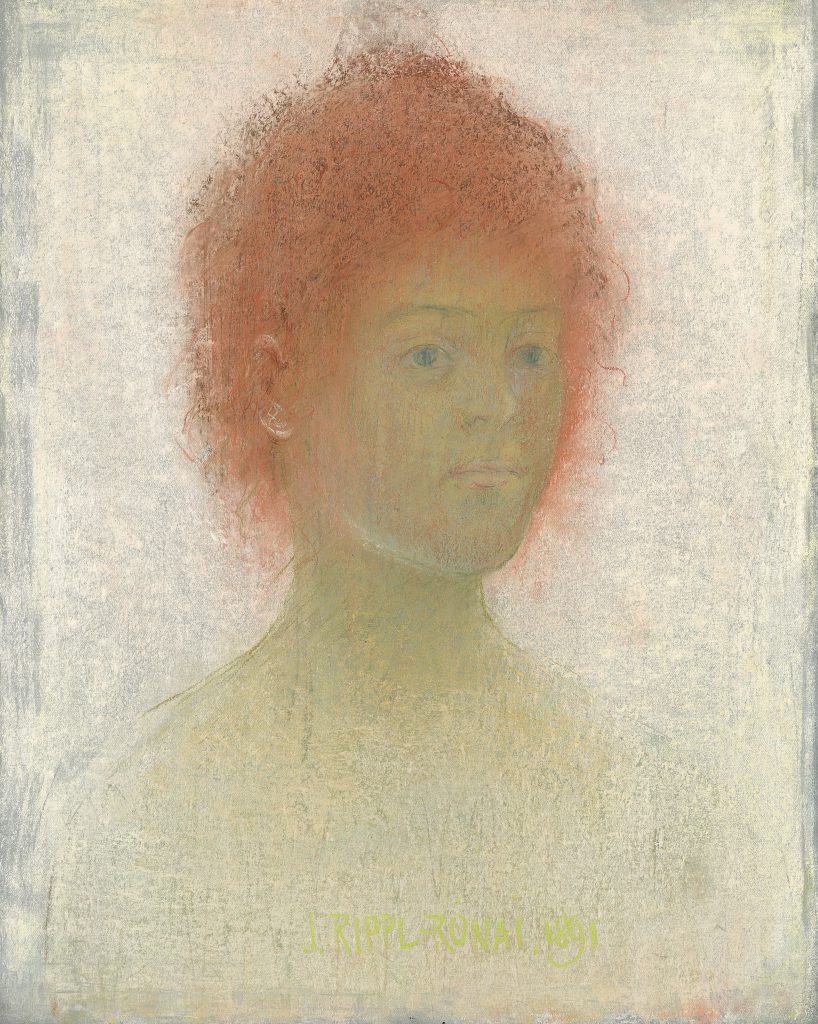A very captivating and unusual portrait by the Hungarian József Rippl-Rónai.
After a degree in pharmacology in Budapest, Rippl-Rónai moved in 1884 to Munich to study at the Akademie der Bildenden Künste for three years, and then he travelled to Paris in 1887 to join the Mihály Munkácsy’s workshop, the most important Hungarian realist painter at the time. At the beginning of the 1890’s, he decided to pull away from Munkácsy’s influence, and to elaborate, in Paris, his own style, notably linked to some paintings he produced in Munich: pastels with foggy colours representing women. Red-haired Woman was created in this vein, a female figure perceived in the midst of a misty decor.
At that time in Paris, the artistic scene was flourishing with new pictorial trends. Rippl-Rónai works were greatly influenced by his relationship with artists from all horizon, particularly Gauguin, Toulouse-Lautrec, Denis, who considerably enriched his aesthetic production. In 1893, he exhibited with the Nabis for their first exhibition at the Le Barc de Bouteville gallery, henceforth receiving the nickname of Le Nabis hongrois [The Hungarian Nabi]. First focused on figures, Rippl-Rónai then also dabbled in plein-air genre and, in the 20th century, ended up trying to also tackle decorative arts in Hungary. The artist’s painting was in continuous evolution throughout his career, and he is now considered as a major figure at the turn of the 19th century.
In the present work, the taste for feminine profiles surrounded by sfumato is a reminiscence of the Pre-Raphaelite movement that his friend James Pitcairn-Knowles made him discover. This ‘blur’ was also present in the art of Whistler, Eugène Carrière and Albert Besnard, whom Rippl-Rónai knew well. This work seems to claim a strong symbolist appearance; however it might also be devoid of esoteric dimensions. Rejecting any doctrine, Rippl-Rónai took the genre of portrait as representation of women as elegant, sensual, seductive or even crazy beings.







